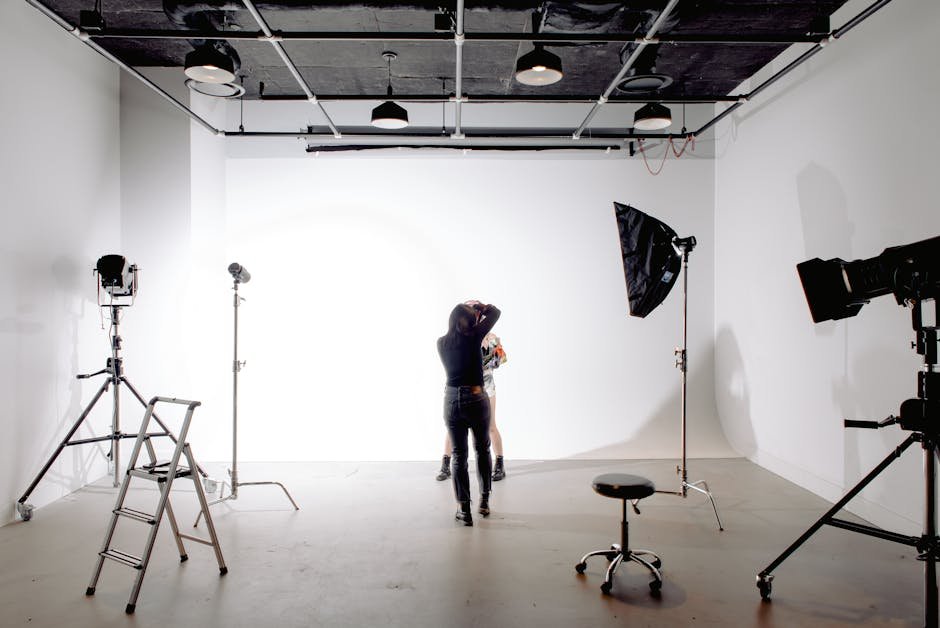Understanding Portrait Photography
What is portrait photography?
Portrait photography is the art of capturing a person's likeness, personality, and mood in a photograph. It focuses on showcasing the unique characteristics and expressions of the subject, often in a flattering and artistic way. In portrait photography, the individual or group being photographed is the main focus of the image. Portrait photographers aim to convey the essence of the subject through their expressions, poses, and the overall composition of the photograph.
Importance of lighting in portrait photography
Good lighting is crucial in portrait photography as it can make or break an image. Effective lighting helps to highlight the subject's features and create a flattering look. Natural light is often preferred as it provides a soft and even illumination, enhancing the subject's natural beauty. Artificial lighting, such as studio lights, gives more control over the lighting setup, allowing for creative effects. Proper lighting can set the mood of the portrait, emphasizing emotions and creating depth in the image. Remember, the right lighting can transform an ordinary portrait into a stunning masterpiece.
Choosing the right location for portrait photography
Always consider the background of your location. It should complement your subject without being distracting. Look for spots with good natural lighting – near windows or in shaded outdoor areas. Busy backgrounds can take focus away from your subject, so opt for simple, uncluttered settings. Outdoor locations can offer a variety of backdrops, like parks, gardens, or urban landscapes. Indoor settings like studios or living rooms provide controlled lighting conditions for consistent results.
Selecting the best poses for portrait photography
Your chosen poses can greatly affect the outcome of your portrait photographs. Consider poses that reflect your personality or those that make you feel comfortable and confident to capture authentic emotions. Soft, natural lighting can enhance your features and create a flattering look. Experiment with different angles and expressions to find what suits you best.
Equipment needed for portrait photography
Portrait photography requires minimal equipment to get started. Here are the essential items you need:
Camera: A digital camera with manual settings will give you more control over your photos.
Lens: A portrait lens, such as a 50mm or 85mm prime lens, is ideal for capturing sharp, well-defined portraits.
Lighting: Good lighting is crucial for flattering portraits. Natural light or a softbox can help achieve this.
Tripod: Keeping your camera steady is important for sharp images, especially in low-light conditions.
Backdrop: A plain backdrop or backdrop stand can help create a clean, professional look for your portraits.
With these basic items, you can start capturing stunning portrait photos.
Tips for capturing genuine emotions in portrait photography
To capture genuine emotions in portrait photography, focus on creating a comfortable environment for your subject. Encourage natural expressions by engaging in genuine conversations or activities during the shoot. Pay attention to body language and facial expressions to capture authentic moments. Avoid forced poses and smiles, instead, let emotions unfold naturally. Use natural light whenever possible to evoke a sense of warmth and authenticity in your portraits.
Editing techniques for enhancing portrait photographs
To enhance your portrait photographs, consider using editing techniques like adjusting brightness and contrast, smoothing out skin imperfections, enhancing colors, and adding sharpness to details. Portrait photography editing can help bring out the best in your subjects, creating stunning and professional-looking images. Experiment with different editing tools and techniques to find what works best for your style and the mood you want to convey in your portraits.
Different styles in portrait photography
Portrait photography comes in various styles. When choosing a style for your portrait, consider the following options:
Traditional: A timeless approach with classic poses and lighting.
Lifestyle: Capture moments in more relaxed, natural settings.
Glamour: Emphasizes beauty with dramatic lighting and retouching.
Candid: Natural, unposed shots that capture genuine emotions.
Fine Art: Artistic and creative portraits often with a unique touch.
Each style conveys a different mood and aesthetic, so choose one that resonates with the essence you want to capture in your portrait.
Famous portrait photographers and their work
You might have heard about Annie Leibovitz, known for her captivating celebrity portraits. Another famous name is Richard Avedon, recognized for his iconic fashion and portrait photography. Steve McCurry is renowned for his striking National Geographic portraits, capturing raw emotions in diverse cultures. Irving Penn's elegant and timeless portraits have left a lasting impact on the art world. These photographers' work continues to inspire and influence contemporary portrait photography trends.
Summary and conclusion
Before investing in a camera and equipment for portrait photography, consider starting with what you have. High-quality cameras and lenses can make a difference, but don't let the equipment hold you back. Understanding composition and lighting is crucial for capturing stunning portraits. Experiment with different angles and lighting setups to find your style. Keep practicing, and don't be afraid to try new techniques. Remember, the most important aspect of portrait photography is capturing the emotion and personality of your subject. Explore different editing styles to enhance your photos, but always remember to stay true to your vision.

